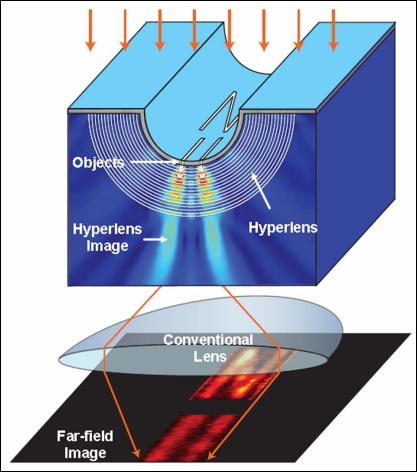Xiang Zhang and colleagues at the University of California in Berkeley are one of two groups that have independently created the first truly magnifying "superlenses". In theory, superlenses should be able to surpass the fundamental resolution limit that plagues all conventional optics by capturing special light waves that exist close to illuminated surfaces. However, until now superlenses had only been able to focus these waves, and not – crucially – magnify them.
The schematic above depicts Zhang's "hyperlens", which is another term for a superlens that spreads light in a hyperbolic shape. As light illuminates the lens, it is scattered off the inscribed object on the surface. Once the light enters, the nano-scale "metamaterial" structure guides the beams outward, forcing one component of the momentum to be compressed. By the time the light leaves the lens, it has been sufficiently magnified and "converted" so that it can travel up to a metre farther - far enough for a conventional microscope to pick up. (Courtesy: Xiang Zhang) |
